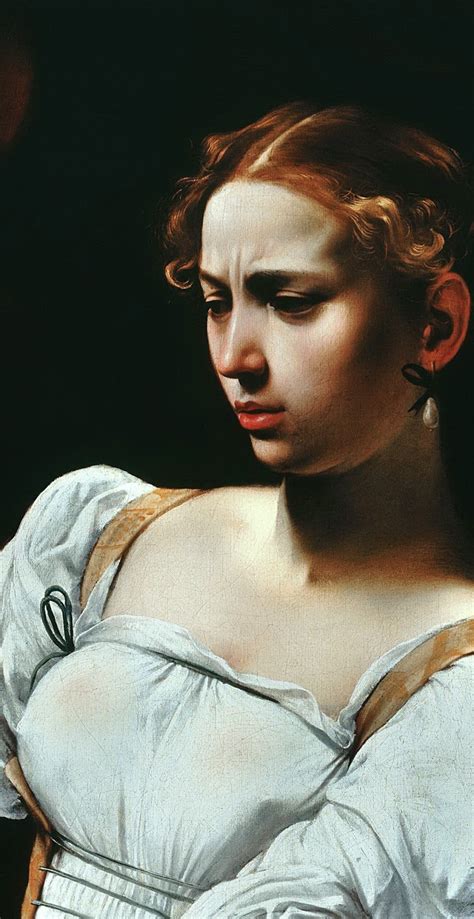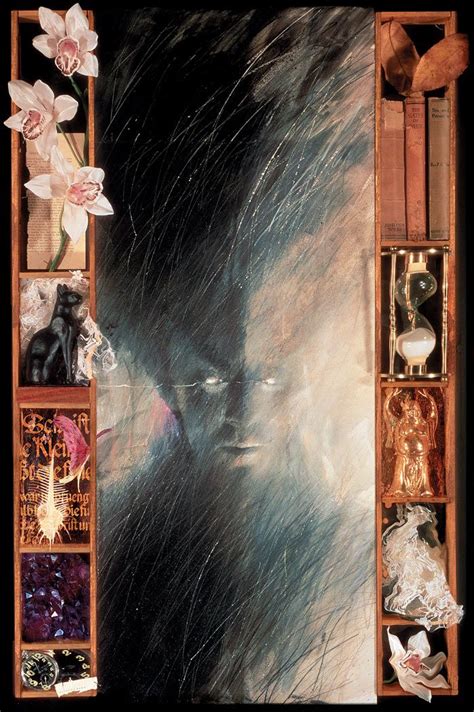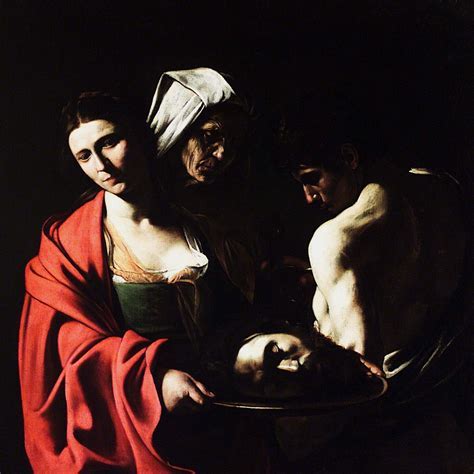Throughout history, there have been extraordinary individuals whose lives and talents have left an indelible mark on the world. Caravaggio, the enigmatic Italian maestro, was undoubtedly one of them. From his humble beginnings to his controversial and tumultuous existence, Caravaggio's story is nothing short of captivating.
Born in the midst of the Renaissance, Caravaggio's artistic brilliance was matched only by his eccentricity and larger-than-life persona. His paintings, characterized by their dramatic use of light and shadow, revolutionized the art world, earning him a reputation as a maverick who defied conventional artistic traditions.
However, beyond his artistic achievements, Caravaggio's life was peppered with intrigue, turmoil, and even violence. His personal struggles, both internal and external, shaped his artistic expression and lent a profound depth to his works. As we delve into the layers of Caravaggio's life story, we discover a man whose genius was fueled by a complex web of triumphs and tribulations.
Join us as we embark on a journey through the labyrinthine corridors of Caravaggio's mind, exploring the influences that shaped his artistic vision, the controversies that surrounded him, and the legacy he left behind. Brace yourself for a glimpse into the tumultuous world of a man whose brilliance knew no bounds.
Caravaggio: The Revolutionary Artist of the Baroque Era

In the realm of art during the Baroque era, there emerged a painter who defied conventions and transformed the way we perceive the world through his revolutionary style. Caravaggio, a master of contrasts, lighting, and emotional intensity, pushed the boundaries of traditional artistic techniques and paved the way for a new era of painting.
Caravaggio's unparalleled ability to capture the human form with uncanny realism, combined with his keen sense of drama, created a unique and powerful visual language that captivated audiences of his time and continues to inspire artists today. His groundbreaking use of chiaroscuro, the sharp contrast between light and dark, not only added depth and dimension to his works but also enhanced the emotional impact of his subjects.
Renowned for his realistic portrayal of characters, Caravaggio employed models from everyday life, bringing a sense of authenticity and immediacy to his canvases. His subjects, often depicted in biblical or mythological scenes, exuded raw emotion and displayed a vivid range of human experiences, from joy and ecstasy to anguish and despair.
But Caravaggio's revolutionary approach to art did not stop at technique alone. He daringly challenged the established norms of the artistic establishment with his choice of subject matter and unconventional compositions. His depictions of religious figures as ordinary people, with flaws and imperfections, caused both controversy and admiration, as he sought to humanize sacred stories and make them accessible to all.
Caravaggio's impact on the art world was profound and long-lasting. His daring style and revolutionary techniques influenced generations of painters, giving rise to the Caravaggisti movement who sought to emulate his mastery. His works continue to be celebrated for their emotional power, technical brilliance, and timeless relevance.
| Common Techniques | Innovative Approaches |
|---|---|
| Chiaroscuro | Realistic portrayal of characters |
| Contrast between light and dark | Unconventional compositions |
| Use of models from everyday life | Humanizing religious figures |
| Emotional intensity | Depiction of flaws and imperfections |
From Early Life to Infamy: Caravaggio's Turbulent Youth
Embarking on a journey that would captivate the artistic world for centuries to come, the enigmatic Caravaggio began his tumultuous life with a flair for unconventional brilliance. From a young age, he showcased a precocious talent for painting, but his path to fame would be marred by a series of hardships and upheavals.
Caravaggio's formative years were characterized by a restless spirit and a relentless pursuit of artistic expression. Born into a world brimming with artistic heritage, he navigated through the streets of Milan, soaking in the vibrant atmosphere and absorbing the nuances of his surroundings. Endowed with an innate curiosity, Caravaggio's wandering spirit led him to Rome, where he found solace in the company of fellow painters.
- Deviant Influences: Drawing Inspiration from the Shadows
- A Brush with the Law: Brushstrokes of Rebellion
- Scandals and Sensationalism: Provoking Society's Gaze
- The Rise of the "Chiaroscuro" Technique: Illuminating the Darkness
- Mastering the Art of Contrasts: Captivating the Beholder
However, Caravaggio's burgeoning talent would soon be overshadowed by a series of notorious incidents that thrust him into infamy. Drawn to the underbelly of society, he became embroiled in a world of debauchery and violence, frequently finding himself at odds with the law. The repercussions of his rebellious nature were not limited to his personal life; they spilled onto his canvases, infusing his art with a distinctive touch that left viewers spellbound.
It was through these tumultuous experiences that Caravaggio developed the innovative "chiaroscuro" technique, manipulating light and shadow to create dramatic and emotionally charged compositions. This revolutionary approach to painting not only captivated audiences but also cemented his status as one of the most influential artists of his time.
Caravaggio's turbulent youth serves as a testament to his unwavering pursuit of artistic expression in the face of adversity. His ability to channel his hardships into a unique artistic language allowed him to transcend societal norms and leave an indelible mark on the art world, shaping the course of Italian art for generations to come.
The Turbulent Beginnings and Influences Shaping the Artist's Path

Delving into the intricate tapestry of Caravaggio's artistic journey unveils a fascinating tale of tumultuous origins and profound influences that molded the trajectory of this extraordinary figure. Examining the early life and formative years of the artist sheds light on the various factors that shaped Caravaggio's unique artistic vision and propelled him towards tumultuous success.
In order to understand the genesis of Caravaggio's artistic genius, it is essential to explore the societal and cultural milieu in which he emerged. Born into a world of artistic opulence and simmering unrest, Caravaggio's youthful experiences were profoundly influenced by the historical context of his era. The turbulence and volatility of Renaissance Italy served as both a catalyst and a backdrop for the unprecedented artistic expression that would come to define Caravaggio's oeuvre.
Though Caravaggio's artistic style stands as a testament to his originality and audacity, it is impossible to overlook the profound impact that the artistic masters of the time had on his work. The seismic influence of Michelangelo, Raphael, and Leonardo da Vinci reverberated through Caravaggio's artistic journey, shaping his technique and pushing the boundaries of his creativity. |
Furthermore, Caravaggio's personal struggles, infused with a compelling blend of rebellion and introspection, found a powerful voice in his art. From his tumultuous relationships and encounters with the law to his own psychological battles, all these facets coalesced into a potent alchemy of artistic expression that transformed the canvas into a mirror reflecting his inner turmoil. |
In conclusion, the genesis of Caravaggio's artistic journey lay in the convergence of various factors, from the historical backdrop of Renaissance Italy to the influences of artistic giants and the artist's own tumultuous existence. Unraveling the troubled origins and formative influences surrounding Caravaggio's path not only illuminates the artist himself but provides an enriched understanding of the profound impact his works continue to have on the art world.
Caravaggio's Innovative Techniques: Chiaroscuro and Realism
In the realm of art history, few artists can be hailed as truly revolutionary. Caravaggio, a celebrated Italian painter from the 17th century, stands out as one such artist. His unparalleled mastery of chiaroscuro and realism breathed new life into the world of art, forever altering the course of artistic expression.
Caravaggio's meticulous use of chiaroscuro, a technique that juxtaposes light and dark contrasts with precision, revolutionized the way artists depicted their subjects. With his bold strokes and striking contrasts, he imbued his paintings with a sense of three-dimensionality, capturing the play of light and shadow in an unprecedented manner. This technique not only heightened the dramatic impact of his works but also added depth and intensity to the subjects he portrayed.
Furthermore, Caravaggio's commitment to realism set him apart from his contemporaries. Rejecting idealized portrayals, he opted for a gritty authenticity that captivated viewers. His ability to capture the raw vulnerability of human subjects, whether in religious scenes or everyday life, brought a palpable sense of emotion and humanity to his paintings. Through his uncompromising depiction of reality, Caravaggio challenged the conventions of the time and paved the way for a new era of artistic representation.
The profound impact of Caravaggio's revolutionary techniques reverberated through the centuries, influencing countless artists and shaping the future of art. His innovative use of chiaroscuro continues to inspire contemporary painters, while his commitment to capturing the raw essence of human existence remains a powerful testament to the enduring relevance of his work.
The Brilliant Interplay of Light and Shadows in Caravaggio's Artistry

Caravaggio, a master of artistic expression, wielded light and shadows with unrivaled finesse in his captivating paintings. Through his revolutionary approach, he harnessed the interplay between light and darkness, breathing life into his subjects with astonishing realism. This distinctive technique, which became known as chiaroscuro, elevated Caravaggio's works to new heights, leaving an indelible mark on the world of art.
Caravaggio's ingenious use of light and shadows unveiled hidden depths, illuminating the human form in a manner unparalleled by his contemporaries. In his hands, light became a master storyteller, transforming mundane scenes into vivid narratives imbued with intense emotions and profound meaning. The interplay of light and shadows guided the viewer's gaze, drawing them deeper into the rich tapestry of his compositions.
Through his skillful manipulation of light, Caravaggio bestowed his subjects with a dramatic presence that commanded attention. Whether depicting religious figures, mythological themes, or candid moments of everyday life, his mastery of light and shadows imbued his paintings with an otherworldly quality. This artistic technique served as a conduit for his introspective exploration of the human condition, evoking a sense of awe and contemplation.
Caravaggio's bold use of chiaroscuro allowed him to sculpt his figures, giving them a three-dimensional quality that seemed to leap off the canvas. Shadows delicately caressed the contours of his subjects, subtly emphasizing their forms and adding depth to their physicality. By skillfully modulating light and darkness, Caravaggio was able to create a heightened sense of realism, captivating viewers and leaving them transfixed by the beauty and authenticity of his paintings.
In summary, Caravaggio's remarkable ability to manipulate light and shadows, as exemplified through chiaroscuro, propelled him to the forefront of the Italian art scene. His innovative technique not only revolutionized the way in which paintings were composed, but also unveiled the hidden depths of the human experience. With each brushstroke, Caravaggio unveiled a world in which light and shadows danced harmoniously, forever leaving an indelible mark on the annals of art history.
The Enigmatic Figure: Caravaggio's Notorious Criminal Past and Infamous Reputation
Delve into the fascinating and controversial persona of the esteemed Renaissance painter, Caravaggio, exploring both his notorious criminal record and wild reputation that surrounded him throughout his life.
Caravaggio's enigmatic life was stained with a web of legal troubles, from petty offenses to more serious and violent crimes. With a proclivity for getting entangled in brawls and altercations, the artist's criminal record reveals a turbulent existence that often spilled into his art. Despite his undeniable genius in capturing human emotion and realism on canvas, his tumultuous personal life added an extra layer of intrigue to his artistic legacy.
Infamous for his rebellious and unpredictable nature, Caravaggio's reputation often preceded him wherever he went. His tempestuous reputation gained him both admirers and detractors, with some seeing his audacious behavior as a reflection of his passion and artistic vision, while others viewed him as a menace to society. Caravaggio's wild persona became intrinsically linked to his art, fueling discussions and debates on the relationship between an artist's demeanor and their creative output.
A constant subject of gossip and controversy, Caravaggio's infamous reputation further cemented his status as a legendary figure in the art world. His unconventional lifestyle, marked by fiery temperament, scandalous love affairs, and daring escapades, captured the imagination of contemporaries and continues to captivate modern audiences alike. Caravaggio's turbulent existence and audacious behavior serve as a testament to the complex nature of artistic genius and how it can often defy societal norms and expectations.
The Enigmatic Nature: Unveiling the Dark Side of Caravaggio

Delving into the depths of Caravaggio's artistic journey, one cannot help but encounter a shadowy undercurrent that runs parallel to his celebrated talent. Beyond the realms of artistic greatness, Caravaggio's life harbored secrets and controversies, shrouding the legacy of this enigmatic figure in mystery. This section unveils the darker aspects of Caravaggio's persona, shedding light on the complexities that accompanied his extraordinary artistic brilliance.
Eccentricity and Turbulence Caravaggio's life was marked by a series of erratic episodes, characterized by both his unyielding temperament and his infamous affinity for trouble. These turbulent episodes not only influenced his personal relationships but also fueled the intensity and authenticity of his artistic expressions. | Controversial Choices Caravaggio's choice of subjects and the unconventional methods he employed in his creations often raised eyebrows and stirred controversy in the artistic community. His penchant for depicting gritty realism, often delving into the underworld and capturing the rawness of human existence, pushed the boundaries of artistic norms and challenged societal expectations. |
Troubled Relationships Caravaggio's personal relationships were marred by conflict and tragedy. His turbulent nature and passionate disposition led to numerous altercations and strained connections with patrons, fellow artists, and even the law. These tumultuous relationships left an indelible mark on his life and art, influencing the emotional depth and intensity of his masterpieces. | Legal Predicaments and Exile Caravaggio's tempestuous lifestyle frequently entangled him in legal troubles, ranging from brawls and physical altercations to more serious offenses. These encounters with the law ultimately led to his exile and forced him to seek refuge in various cities and territories, further fueling the sense of restlessness and displacement in his art. |
Examining the obscure facets of Caravaggio's life reveals a complex man whose artistic genius was both intertwined with and fueled by the shadows that followed him. Uncovering the dark side of this acclaimed artist allows us to appreciate the layers of complexity and intrigue that make Caravaggio's contributions to the art world truly remarkable.
Caravaggio's Iconic Works: Power, Drama, and Religious Themes
Renowned for his extraordinary talent and unparalleled ability to capture the essence of human emotion, Caravaggio left an indelible mark on the world of art. His iconic works, characterized by their striking power, intense drama, and profound religious themes, continue to captivate audiences centuries later.
In each brushstroke, Caravaggio masterfully conveyed the raw energy and captivating intensity that defines his artistic style. His use of bold chiaroscuro, with stark contrasts of light and shadow, heightened the dramatic impact of his compositions. This technique, combined with his impeccable attention to detail, created an unparalleled depth and realism that breathes life into his subjects.
Religious themes played a crucial role in Caravaggio's oeuvre, as he sought to bring the divine to the realm of mortal existence. His depictions of biblical narratives and saints resonated with a profound spirituality, drawing viewers into a world steeped in reverence and contemplation. Caravaggio's unique ability to infuse religious scenes with an emotional charge transformed traditional religious art, setting a new standard that would influence generations of artists.
Caravaggio's iconic works not only exemplify his technical brilliance but also serve as a reflection of the tumultuous times in which he lived. His portrayal of human emotions, often in their most raw and vulnerable states, mirrored the social and political upheavals of 17th-century Italy. Through his art, Caravaggio captured the complexities of human existence, revealing the universal struggle between good and evil, light and darkness.
Caravaggio's legacy as one of the greatest painters in history is undeniable. His ability to harness the power of light, capture the depths of human emotion, and infuse his works with profound religious significance continues to inspire and awe audiences today. Each brushstroke tells a story, carrying the weight of centuries and inviting viewers to immerse themselves in the timeless beauty and compelling narratives of Caravaggio's iconic masterpieces.
FAQ
Was Caravaggio a famous painter?
Yes, Caravaggio is widely regarded as one of the most famous Italian painters of all time. His unique style and use of light and shadow revolutionized art during the Baroque period.
What was Caravaggio's artistic style?
Caravaggio was known for his dramatic and realistic portrayal of subjects. He often depicted religious and mythological scenes with a strong emphasis on chiaroscuro, the contrast between light and dark.
Was Caravaggio's life as remarkable as his art?
Indeed, Caravaggio's life was filled with controversy and intrigue. He was involved in brawls, had numerous legal troubles, and even committed murder. His tumultuous life greatly influenced his art and made him a legendary figure in art history.
What are some of Caravaggio's famous works?
Caravaggio's most famous works include "The Calling of Saint Matthew", "The Conversion of Saint Paul", "Bacchus", and "Medusa". These paintings showcase his mastery of light and shadow, as well as his ability to capture the human emotion in his subjects.
How did Caravaggio's art impact future generations of painters?
Caravaggio's innovative use of light and shadow, his realism, and his focus on human emotions greatly influenced future generations of painters. His style, known as Caravaggism, had a profound impact on the Baroque art movement and continues to inspire artists to this day.
What were Caravaggio's most famous artworks?
Caravaggio is well-known for his revolutionary use of light and shadow, which he employed in his famous artworks such as "The Calling of Saint Matthew," "The Conversion of Saint Paul," and "The Death of the Virgin."



